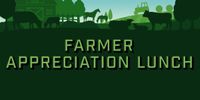Huge strides were made in the work of expanding the pollinator gardens at the Discovery Nature Sanctuary in Winkler this year.
Paul Goossen, chair of the DNS committee, says they tackled many hours of work, along with the help of volunteers, summer staff from the City of Winkler, and the Pembina Valley Watershed District.
Pollinator gardens are habitats for pollinators, and pollinators are important for native plants and crops that depend on them for their pollination. This year, the DNS had over 1700 native plants added to the pollinator garden. Goossen says there were many, many hours spent watering and weeding the gardens throughout the summer.
"It was just amazing to watch the transformation of that garden, from small little plants to one species of plants that must have been up to about 3 feet tall already. And the fact that the pollinators actually started using the garden as well in the summertime, which was really neat."
Some of the visitors that frequent the Discovery Nature Sanctuary in Winkler are species at risk. Goossen says one of the species they've been able to entice to occupy space within the sanctuary is the barn swallow. He says they set up a shelter for the birds to nest in, and not only did they take to the shelter, but they also started nesting in the outdoor classroom.
"The other species that we're trying to attract is the Bank Swallow. It is also a threatened species, and it does use the Nature Sanctuary, at least the area above the Nature Sanctuary to feed on the insects that are flying around, especially near the pond area. The Bank Swallows like to nest in dirt piles or gravel pits or riverbanks, and so we have a large earthen mound that we modified this year with some more suitable soil."
Goossen says they hope the Bank Swallows will find the earth mound suitable to burrow in make their nesting tunnels and start their nesting activities.
Some exciting advancements were made on the grassland restoration project at the DNS this year as well.
"This year, we did get about 6 1/2 acres seeded, and so that was an initial start. We're hoping to do some more seeding next year to deal with areas that were a little more of a challenge this year."
Hopefully, Goossen says in the next two- or three-years DNS will be home to beautiful, flourishing, tall grass and other species of grasses. He said it should be something folks will enjoy while giving them a sense of what the Prairie used to look like.
In response to Canada's Online News Act and Meta (Facebook and Instagram) removing access to local news from their platforms, PembinaValleyOnline encourages you to get your news directly from your trusted source by bookmarking this page and downloading the PembinaValleyOnline app.

















